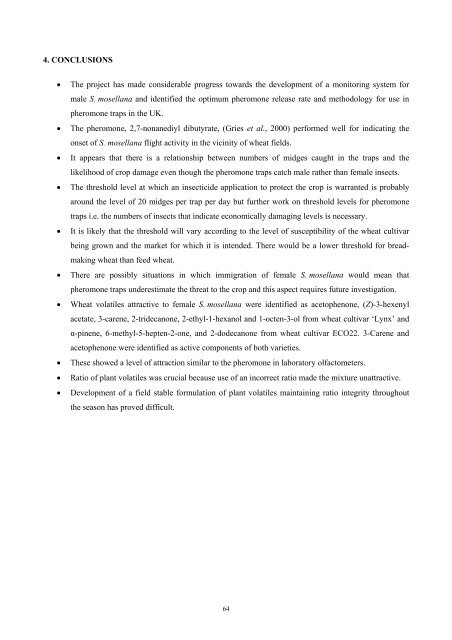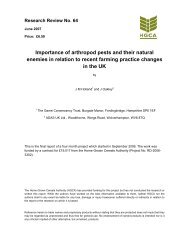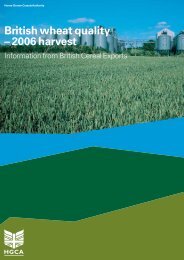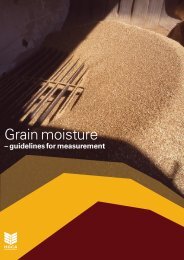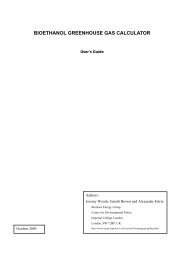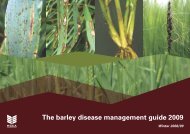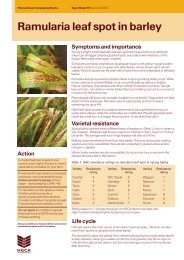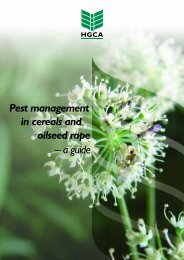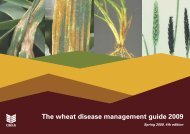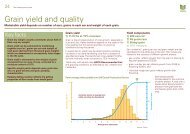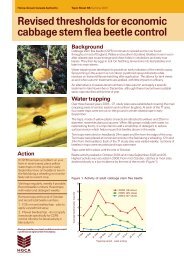Integrated control of wheat blossom midge - HGCA
Integrated control of wheat blossom midge - HGCA
Integrated control of wheat blossom midge - HGCA
You also want an ePaper? Increase the reach of your titles
YUMPU automatically turns print PDFs into web optimized ePapers that Google loves.
4. CONCLUSIONS• The project has made considerable progress towards the development <strong>of</strong> a monitoring system formale S. mosellana and identified the optimum pheromone release rate and methodology for use inpheromone traps in the UK.• The pheromone, 2,7-nonanediyl dibutyrate, (Gries et al., 2000) performed well for indicating theonset <strong>of</strong> S. mosellana flight activity in the vicinity <strong>of</strong> <strong>wheat</strong> fields.• It appears that there is a relationship between numbers <strong>of</strong> <strong>midge</strong>s caught in the traps and thelikelihood <strong>of</strong> crop damage even though the pheromone traps catch male rather than female insects.• The threshold level at which an insecticide application to protect the crop is warranted is probablyaround the level <strong>of</strong> 20 <strong>midge</strong>s per trap per day but further work on threshold levels for pheromonetraps i.e. the numbers <strong>of</strong> insects that indicate economically damaging levels is necessary.• It is likely that the threshold will vary according to the level <strong>of</strong> susceptibility <strong>of</strong> the <strong>wheat</strong> cultivarbeing grown and the market for which it is intended. There would be a lower threshold for breadmaking<strong>wheat</strong> than feed <strong>wheat</strong>.• There are possibly situations in which immigration <strong>of</strong> female S. mosellana would mean thatpheromone traps underestimate the threat to the crop and this aspect requires future investigation.• Wheat volatiles attractive to female S. mosellana were identified as acetophenone, (Z)-3-hexenylacetate, 3-carene, 2-tridecanone, 2-ethyl-1-hexanol and 1-octen-3-ol from <strong>wheat</strong> cultivar ‘Lynx’ andα-pinene, 6-methyl-5-hepten-2-one, and 2-dodecanone from <strong>wheat</strong> cultivar ECO22. 3-Carene andacetophenone were identified as active components <strong>of</strong> both varieties.• These showed a level <strong>of</strong> attraction similar to the pheromone in laboratory olfactometers.• Ratio <strong>of</strong> plant volatiles was crucial because use <strong>of</strong> an incorrect ratio made the mixture unattractive.• Development <strong>of</strong> a field stable formulation <strong>of</strong> plant volatiles maintaining ratio integrity throughoutthe season has proved difficult.64


